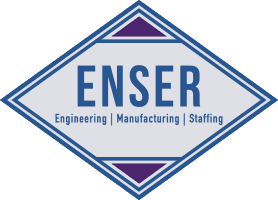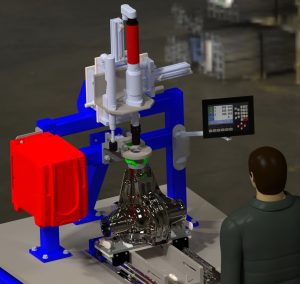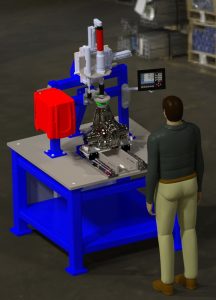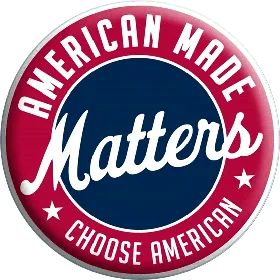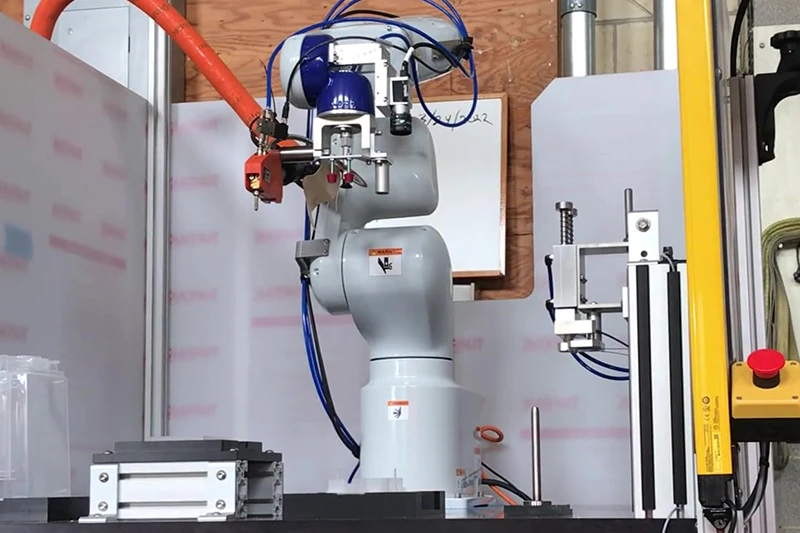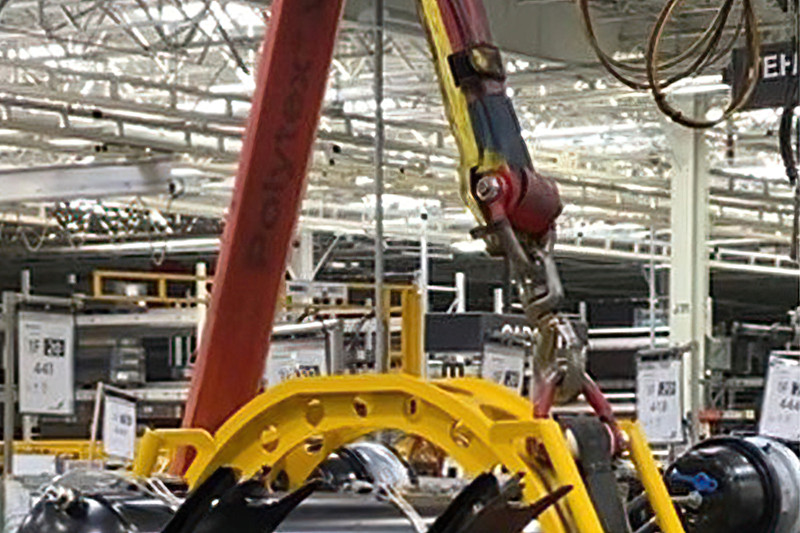Semi-Automated Differential Pinion Nut Torque Machine
Background
Industry:Automotive Manufacturing
Project Focus:Programmable Torque System for Pinion Nut Assembly
Disciplines:Process Observation, Mechanical Design Engineering, Collaborative Development.
OVERVIEW
To address the challenges of manual pinion nut torqueing on front and rear differentials, ENSER collaborated with an automotive manufacturer to engineer a precision-driven, semi-automated torque machine. This solution replaced a labor-intensive and error-prone manual process, helping streamline production, improve repeatability, and reduce costly rework.
Challenge
The client's existing method required technicians to tighten pinion nuts using breaker bars with long handle extensions—a process that lacked precision and presented several operational risks:
- High Risk of Overtorque: A mere ¼ turn could shift drag torque or backlash outside the allowed range, resulting in part failure.
- Manual Labor Fatigue: Repeated physical effort increased the chance of inconsistency and ergonomic strain.
- Costly Rework: Any misstep required teardown, replacement of the crush tube, and a complete reassembly.
ADDITIONAL Challenges
- Part Variability: The system needed to accommodate a wide range of differential sizes and specifications.
- Operator Safety: Safe handling and hands-free operation were essential.
- Compact Footprint: Space constraints required a durable, efficient machine with a long service life.
Solution
ENSER developed a semi-automated pinion nut torque machine capable of programmable torque application in 1-degree increments, integrated with real-time drag torque and backlash verification. Key features included:
- Multi-Variant Adaptability: Adjustable load nests and programmable torque heads support a broad range of SKUs and assembly specs.
- Intelligent Error Handling: Units that fail backlash checks are automatically flagged and reset, preventing out-of-spec parts from progressing in the production line.
- Touchscreen Interface: Intuitive controls guide the operator through each cycle, with real-time visual feedback and pass/fail notifications.
- Enhanced Ergonomics and Safety: Once loaded, the shuttle system securely transports the component for hands-free torqueing. Sensors and feedback systems halt operation in the event of alignment or torque anomalies.
CUSTOMER Benefits
- Increased Throughput & Consistency
The automated torque cycle eliminates guesswork, reduces rework, and ensures high-precision assembly. With incremental tightening capabilities and automated error correction, cycle time improves without compromising accuracy.
- Greater Flexibility Across Product Lines
The modular nest design accommodates multiple differential types, minimizing changeover time and maximizing operational uptime.
- Improved Operator Experience
The system’s ergonomic layout and safety-first design reduce physical strain, enhance user confidence, and ensure safe handling during every shift.
- IP Ownership
As part of ENSER’s service model, all custom machine designs become the exclusive intellectual property of the client, preserving their competitive advantage.
Frequently Asked Questions
Explore More Custom Machinery Solutions
Ready to improve your production precision and reduce downtime? Contact ENSER to learn how we can engineer a solution tailored to your manufacturing challenges.


